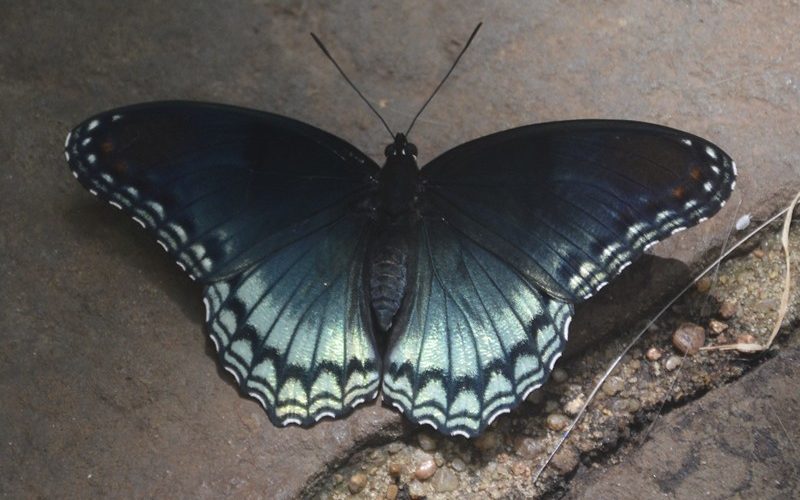It’s butterfly season in the Ozarks
AMANDA BANCROFT
Making Ripples
Butterfly season is in full swing! Patterned wings are fluttering like confetti in sunlit meadows and along rural roads, brushing my face with no regard for personal boundaries. Arkansas butterflies are beauties, and summer is the perfect time of year to admire them.
There are over 130 species of butterflies in Arkansas. Our state even has a butterfly as one of its symbols: the Diana fritillary (Speyeria diana) “Arkansas’s ‘showcase butterfly’ and one of the best examples of sexual dimorphism,” writes Lori A. Spencer in her book “Arkansas Butterflies and Moths.” Males and females look like they’re different species — in brief, males are orange and brown while females are blue and black. Both the Diana fritillary and the Red-spotted Purple mimic the poisonous Pipevine Swallowtail. The swallowtail tastes bad to predators that try to eat it.
Some butterflies have common names that include other animals. The striped Zebra swallowtail resembles a zebra, while the males and the yellow form of female Tiger swallowtails resemble tigers (the dark form of the female does not; it also mimics the Pipevine swallowtail). Identification can be confusing, but we don’t need to know their human-given names to love every inch of our planet and delight in its known and unknown wonders.
To support these flying paintings, host plants are needed. Butterflies can typically only lay eggs on certain plants. For Monarchs, its milkweed; for Zebra swallowtails, its paw-paw trees; and so on. Their caterpillars only eat the host plant. No host plant? No butterflies of that species. Some butterflies have multiple host plants.

Photos courtesy Amanda Bancroft
Like stained glass, Arkansas butterflies light up the landscape this time of year.

Are you out and about seeing butterflies? Take a photo with your smart phone and upload data to iNaturalist.org “Arkansas Butterflies and Moths,” a listing of sightings statewide. This helps people who study these flying creatures by giving researchers an idea of population size and locations. Not sure about the ID? No problem. Other naturalists and experts using the app can help you ID your sighting, or pick up the book “Arkansas Butterflies and Moths” and make your best guess. (If you’re wrong, someone will probably correct your entry by suggesting what they think it is.)
If you don’t see many butterflies near your house, plant native pollinator-attracting flower species and host plants, visit a local park, or enjoy the Botanical Garden of the Ozarks’ Butterfly House! It’s really cool, and you can see butterflies up close as they fly and feed. Volunteers called “butterfly nannies” help care for the caterpillars, cocoons and butterflies, and also provide educational programming. The garden is open seven days a week from 9 a.m. to 5 p.m., and admission is $7 for adults, $4 for children ages 5-12, free for children age 4 and younger as well as BGO members. Fayetteville residents are admitted free on Saturday mornings from 9 a.m. to noon. (Check-in at the Visitor’s Center before entering the gardens.)
Amanda Bancroft is a writer, artist, and naturalist living in an off-grid tiny house on Kessler Mountain. She and her husband Ryan blog about their adventures and offer tips to those wanting to make a difference at www.MakeRipples.org.










